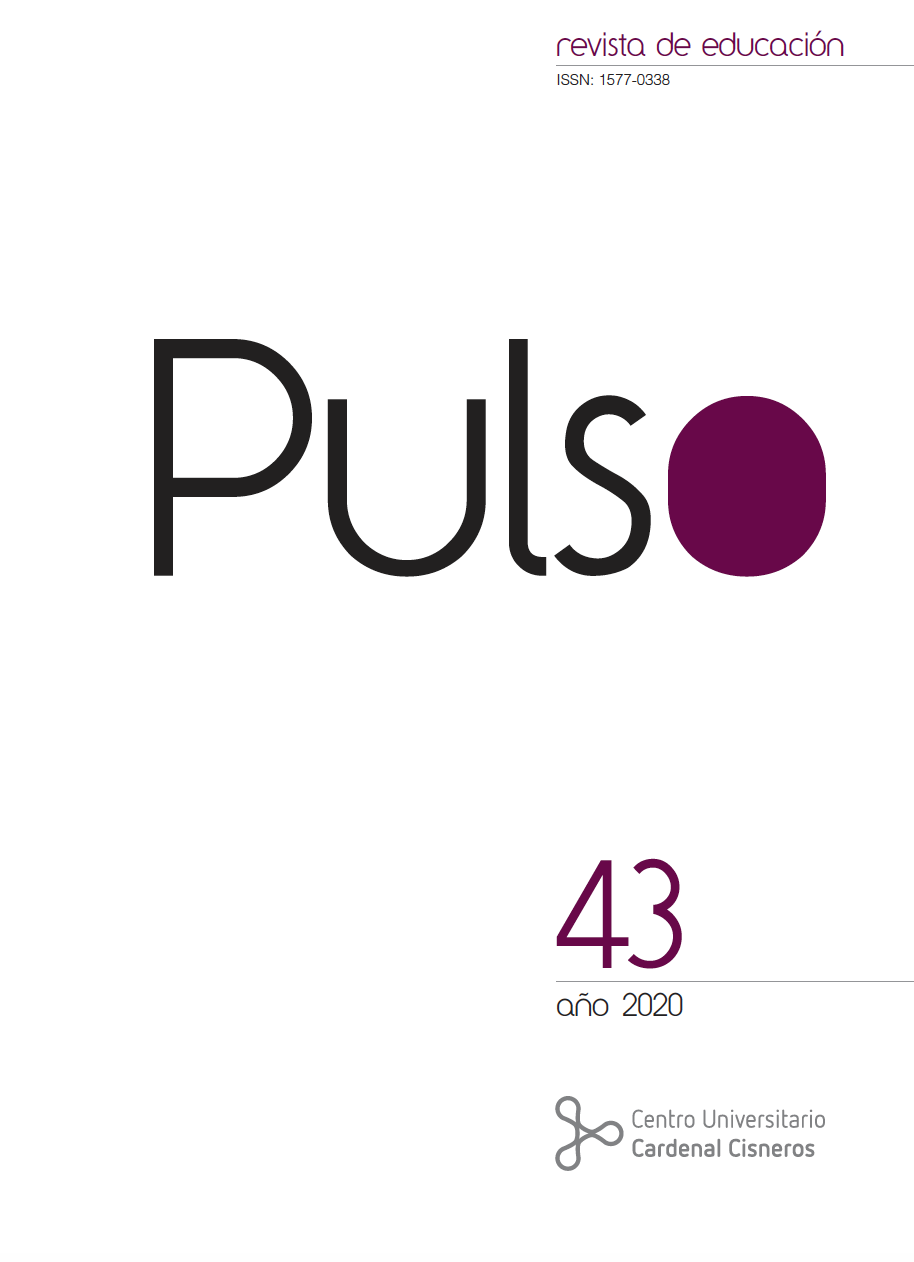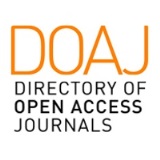Disruptive behaviour in compulsory secondary education classrooms: a multi-informant analysis of the perceptions of teachers and students
DOI:
https://doi.org/10.58265/pulso.4793Keywords:
Teacher-student perceptions, Disruptive behaviour, Secondary education, School climate, Multi-informant studyAbstract
This study explores the relationship between disruption and three sets of indicators on school climate from a multi-informant approach. The data came from 4055 teachers and 16017 students from 187 secondary schools. The three dependent variables were teachers’ and students’ perceptions of disruption, and students’ admitting having participated in disruptive actions. The indicators chosen as predictors included a first group related to the school-climate quality, a second one about organizational measures that could improve this climate, and a third group about obstacles that deteriorate it. The results showed that teachers’ perceptions have a higher relation with the three sets of predictors. Meanwhile, indicators of obstacles to coexistence were those who showed greater variance associated with the three measures of disruption. It was found that, when teachers feel valued and respected by families, this is associated to lower levels of teachers’ perceived disruption and students’ admitted disruption. The analysis of the obstacles in achieving a good school climate shows that disruptive and aggressive behaviors are closely linked. Relations with teachers’ coercive behavior support the existence of growing disruption-coercion-disruption loops.
Downloads
References
Álvarez Martino, E., Álvarez Hernández, M., & Castro Pañeda, P. (2016). Teachers’ perception of disruptive behaviour in the classrooms. Psicothema, 28, 2, 174-180.https://doi.org/10/ggxkj7
Badía, M. (2001). Las percepciones de profesores y alumnos de ESO sobre la intervención en el comportamiento disruptivo: Un estudio comparativo. Universidad Autónoma de Barcelona.
Daley, D., Renyard, L., & Sonuga-Barke, E. J. S. (2005). Teachers’ emotional expression about disruptive boys. British Journal of Educational Psychology, 75(1), 25-35. https://doi.org/10.1348/000709904X22269
Defensor del Pueblo. (2000). Informe sobre violencia escolar. Oficina del Defensor del Pueblo. https://www.defensordelpueblo.es/wp-content/uploads/2015/05/2000-01-Violencia-escolar-el-maltrato-entre-iguales-en-la-educaci%C3%B3n-secundaria-obligatoria.pdf
Del Barrio, C., & Martín, E. (2003). Dossier temático: Convivencia y conflicto en los centros escolares. Infancia y Aprendizaje, 26(1), 1-128. https://doi.org/10.1174/02103700360536392
Díaz-Aguado, M. J. (2015). Da violência escolar à cooperação na sala de aula. Americana SP Adonis.
Díaz-Aguado, M. J., Martínez, R., & Martín, J. (2010). Estudio Estatal sobre la convivencia escolar en la Educación Secundaria Obligatoria. Ministerio de Educación-Observatorio Estatal de la Convivencia Escolar.
Eliot, M., Cornell, D., Gregory, A., & Fan, X. (2010). Supportive school climate and student willingness to seek help for bullying and threats of violence. Journal of School Psychology, 48(6), 533-553. https://doi.org/10.1016/J.JSP.2010.07.001
Fernández, I. (Ed.). (2001). Guía para la convivencia en el aula. Ciss-Praxis.
FETE-UGT. (2010). La violencia como factor de riesgo psicosocial en los trabajadores de la enseñanza.FETE-UGT. http://www.observatoriodelainfancia.es/oia/esp/descargar.aspx?id=2606&-tipo=documento
Goodson, I. F. (Ed.). (1992). Studying teachers’ lives. Routledge. Gottfredson, D. C., Gottfredson, G. D., & Hybl, L. G. (1993). Managing adolescent behavior a multiyear, multischool study. American Educational Research Journal, 30(1), 179-215. https://doi. org/10.3102/00028312030001179
Gottfredson, G. D., Gottfredson, D. C., Payne, A. A., & Gottfredson, N. C. (2005). School climate predictors of school disorder: Results from a national study of delinquency prevention in schools. Journal of Research in Crime and Delinquency, 42(4), 412-444. https://doi.org/10.1177/0022427804271931
Gotzens, C., Castelló, A., Genovard, C., & Badía, M. (2003). Percepciones de profesores y alumnos de ESO sobre la disciplina en el aula. Psicothema, 15(3), 362–368.
Gregory, A., & Cornell, D. (2009). “Tolerating” adolescent needs: Moving beyond zero tolerance policies in high school. Theory Into Practice, 48(2), 106-113. https://doi. org/10.1080/00405840902776327
Houghton, S., Wheldall, K., & Merrett, F. (1988). Classroom behaviour problems which secondary school teachers say they find most troublesome. British Educational Research Journal, 14(3), 297-312. https://doi.org/10.1080/0141192880140306
IBM Corp. (2010). IBM SPSS Statistics for Windows, Version 19.0. IBM Corp.
Kaplan, A., Gheen, M., & Midgley, C. (2002). Classroom goal structure and student disruptive behaviour. British journal of educational psychology, 72(2), 191-211. https://doi.org/10.1348/000709902158847
Lewis, R. (2001). Classroom discipline and student responsibility: The students’ view. Teaching and teacher education, 17(3), 307-319. https://doi.org/10.1016/S0742-051X(00)00059-7
Marchesi, A. (2004). Qué será de nosotros, los malos alumnos. Alianza Editorial.
Martínez, B. (2016). La disrupción en las aulas de educación secundaria. La percepción del profesorado [Tesis doctoral no publicada]. Universidad Complutense de Madrid.
Martínez Fernández, M. B., Chacón Gómez, J. C., Martín Babarro, J., Díaz-Aguado Jalón, M. J., & Martínez Arias, R. (2017). Teachers’ Perceived Disruption at School and Related Variables from Teachers and School Functioning. The Spanish Journal of Psychology, 20, E67. https://doi.org/10/ggwhsx
Medina, J. A., & Reverte, M. J. (2019). Incidencia de la práctica de actividad física y deportiva como reguladora de la violencia escolar. Retos, 35, 54-60.
Muñoz de Bustillo, M. del C., Pérez, D., & Martín, E. (2006). ¿Qué penalizan los docentes?: Análisis de la disciplina a través de los partes de incidencia. Infancia y Aprendizaje, 29(4), 423-435. https://doi.org/10.1174/021037006778849477
Nelson, J. R. (1996). Designing schools to meet the needs of students who exhibit disruptive behavior. Journal of Emotional and Behavioral Disorders, 4(3), 147-161. https://doi. org/10.1177/106342669600400302
OCDE. (2014). Estudio Internacional de la Enseñanza y Aprendizaje TALIS 2013. Informe español. Ministerio de educación, Cultura y Deporte. http://www.mecd.gob.es/inee/Ultimos_informes/ TALIS-2013.html
OECD. (2020). TALIS 2018 Results (Volume II): Teachers and School Leaders as Valued Professionals.OECD. https://doi.org/10.1787/19cf08df-en
Patterson, G. R. (1982). Coercive family process. Eugene.
Power, F. C., Higgins, A., & Kohlberg, L. (1991). Lawrence Kohlberg’s approach to moral education. Columbia University Press.
Singh, K., & Billingsley, B. S. (1998). Professional support and its effects on teachers’ commitment. The Journal of Educational Research, 91(4), 229-239. https://doi.org/10.1080/00220679809597548
Skiba, R. J., & Losen, D. J. (2016). From reaction to prevention: Turning the page on school discipline. American Educator, 39(4), 4.
Torrego, J. C., & Moreno, J. M. (2003). Convivencia y disciplina en la escuela. El aprendizaje de la democracia. Alianza.
Trianes, M. V., Sánchez, A., & Muñoz, A. (2001). Educar la convivencia como prevención de violencia interpersonal: Perspectivas de los profesores. Revista Interuniversitaria de Formación del Profesorado, 41, 73-93.
Uruñuela, P. M. (2006). Convivencia y conflictividad en las aulas. Análisis conceptual. En La disrupciónen las aulas: Problemas y soluciones (pp. 17-46). Ministerio de Educación.
Verdugo, R. R., & Schneider, J. M. (1999). Quality Schools, Safe Schools A Theoretical and Empirical Discussion. Education and Urban Society, 31(3), 286-308. https://doi. org/10.1177/0013124599031003003
Watkins, C., & Wagner, P. (1991). La disciplina escolar: Propuesta de trabajo en el marco global del centro. Paidós.
Way, S. M. (2011). School discipline and disruptive classroom behavior: The moderating effects of student perceptions. The Sociological Quarterly, 52(3), 346-375. https://doi.org/10.1111/J.1533- 8525.2011.01210.X
Wright, D. B. (1996). Understanding statistics: An introduction for the social sciences. Sage.
Downloads
Published
How to Cite
Issue
Section
License
Copyright (c) 2022 Pulso. Revista de educación

This work is licensed under a Creative Commons Attribution-NonCommercial-NoDerivatives 3.0 Unported License.
This journal offers immediate open access to its content based on the idea that offering readers free access to research favours a global exchange of knowledge.
Papers are published in the electronic version of the journal under a Creative Commons License: Attribution-NonCommercial-No derivatives 4.0 International
Authors are allowed and encouraged to promote the post-print version (reviewed and accepted for publication version) of their work online before publishing them. This favours their earlier circulation and dissemination and thus a possible increase in their citation and reach among the academic community.














